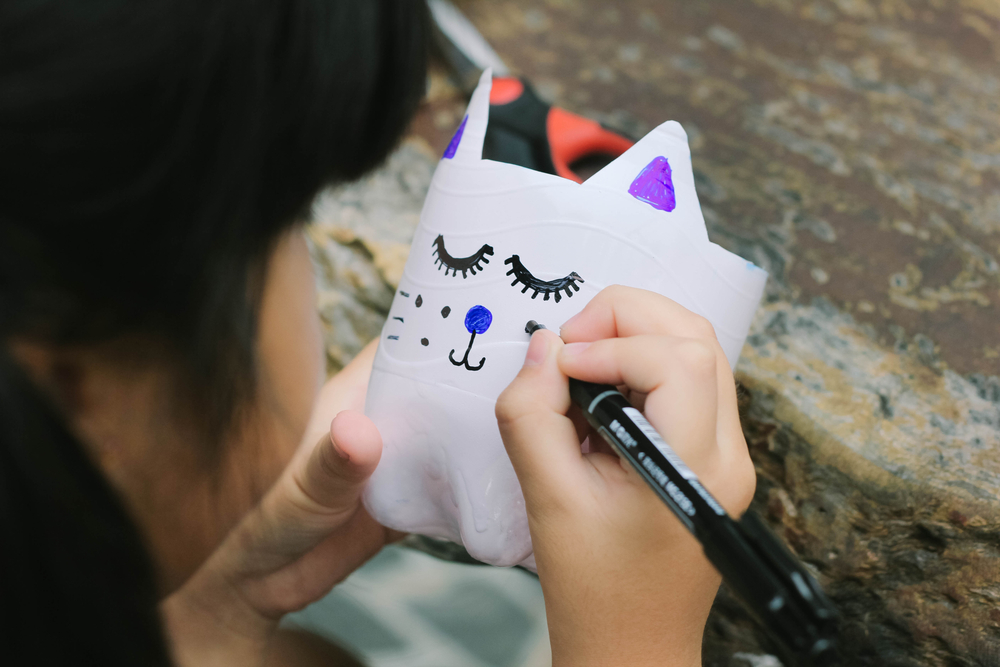Phonetic awareness Worksheets for Kids
4 filtered results
-
From - To
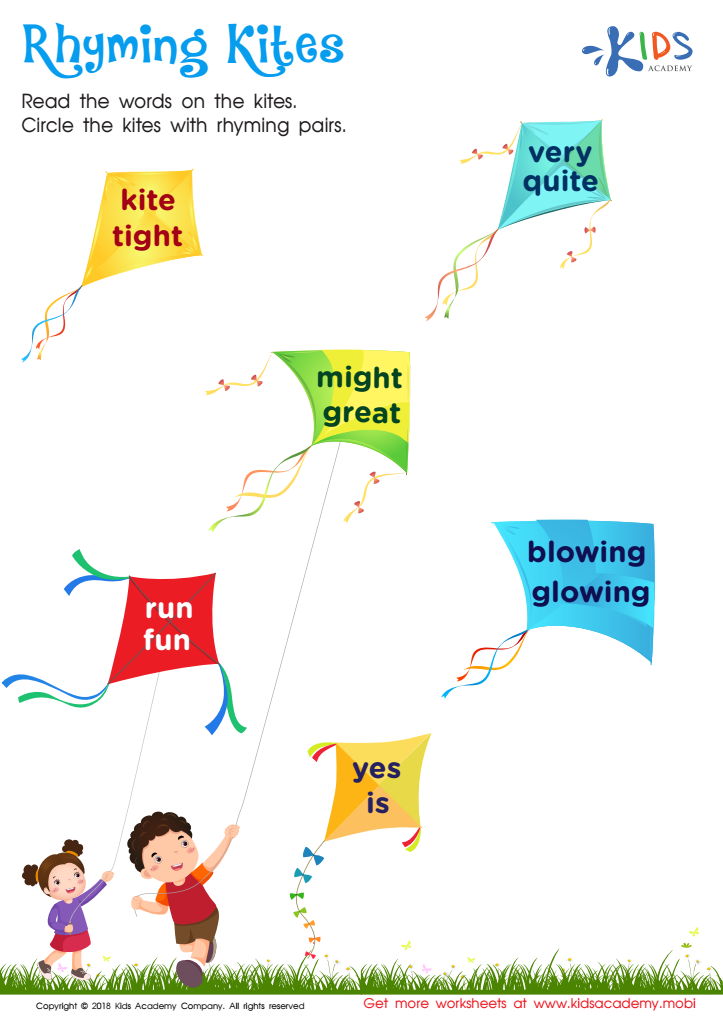

Rhyming Kites Worksheet
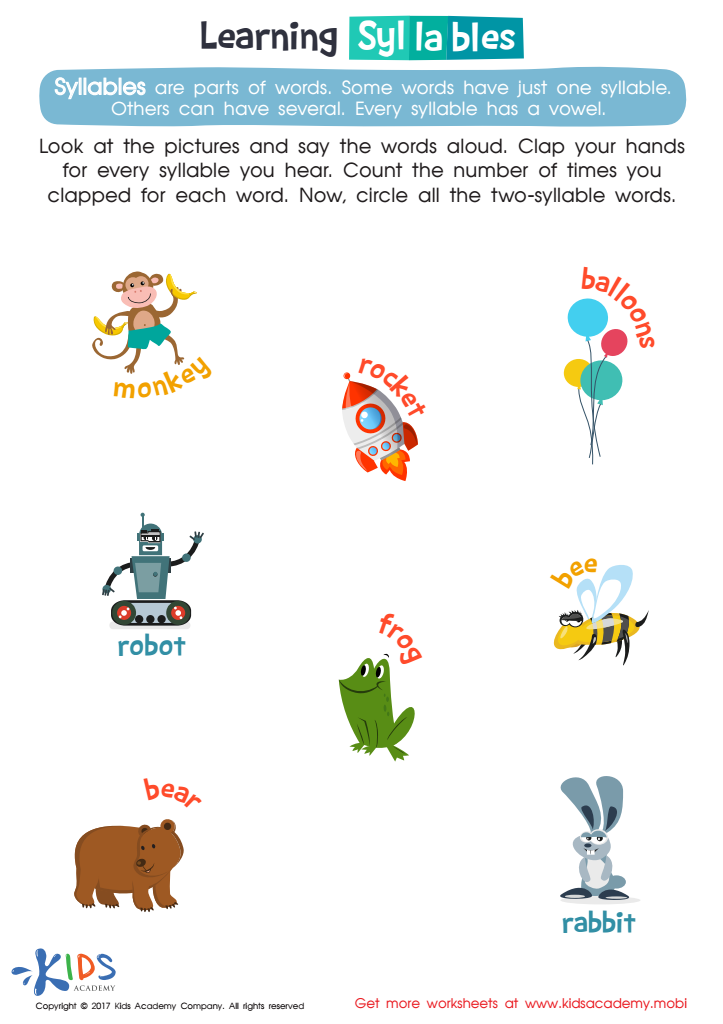

Learning Syllables Word Structure Worksheet
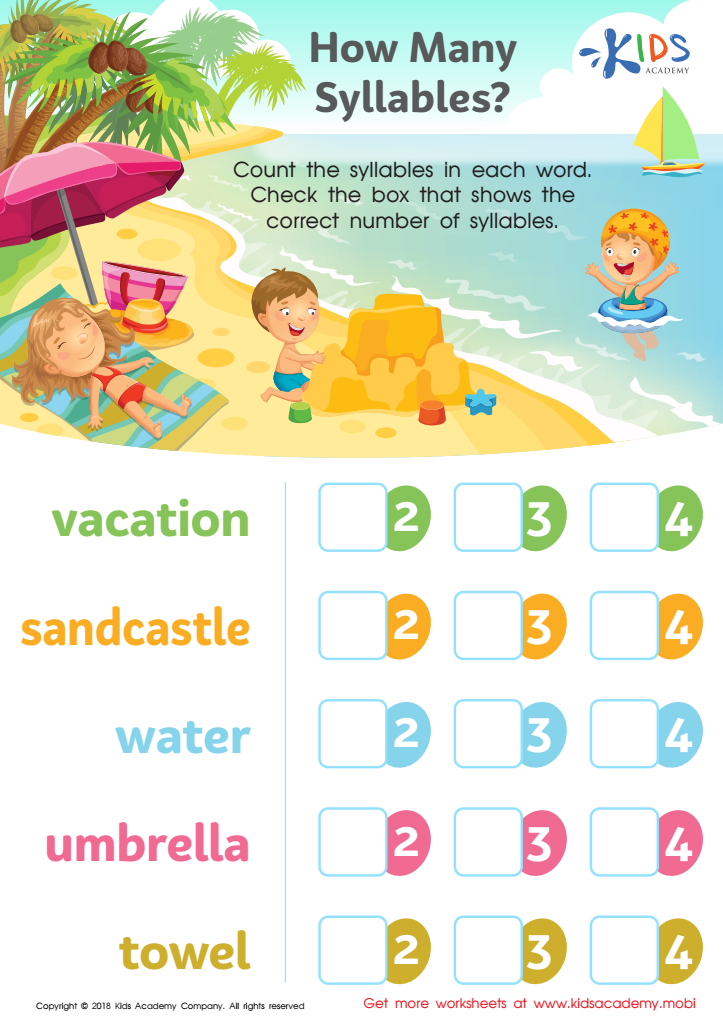

How Many Syllables Worksheet
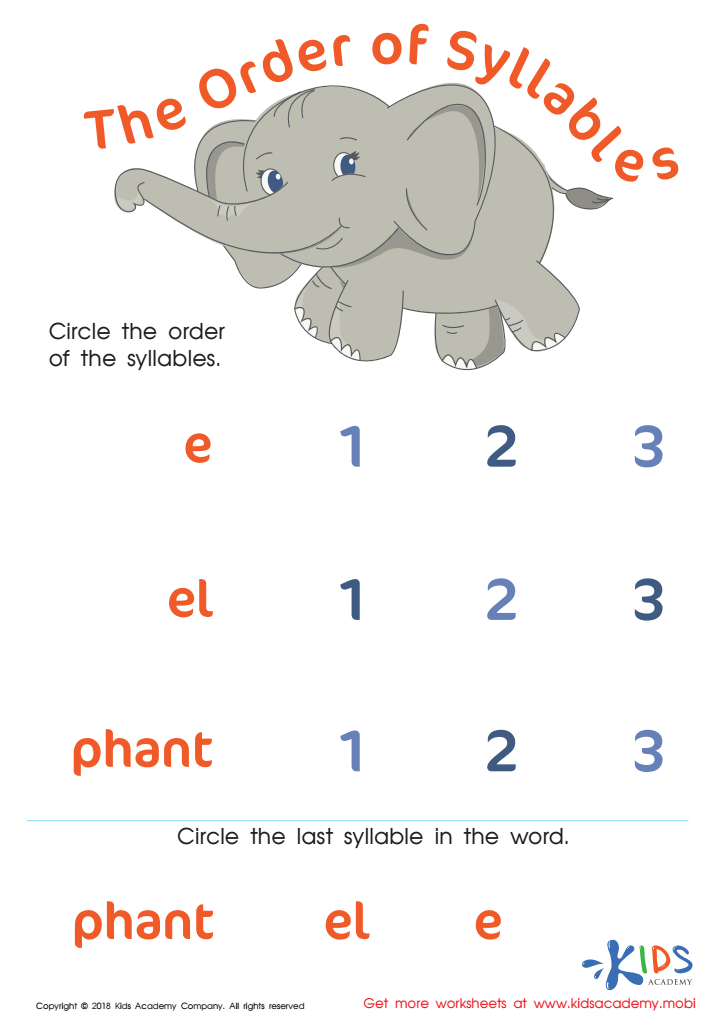

The Order of Syllables Worksheet
Question/Answer
How does the mastery of the Phonetic awareness skill affect a student's performance at an early age?
Mastery of phonetic awareness at an early age significantly enhances a student's reading and spelling abilities. By understanding the sounds that letters and letter combinations make, children can decode words more effectively, leading to improved reading fluency, comprehension, and overall literacy skills. Early mastery in phonetic awareness sets a solid foundation for future academic success in all areas of learning.
What does the Phonetic awareness skill mean when it comes to Grade 3 Grammar learning?
Phonetic awareness in Grade 3 Grammar learning refers to the ability to recognize and manipulate the sounds in words (phonemes). It involves understanding how phonemes come together to form words and being able to break down words into their constituent sounds, crucial for developing reading and spelling skills at this educational level.
What are some effective activities to train students’ Phonetic awareness skill when teaching them about Grammar?
Effective activities to train students' phonetic awareness include sound matching games, phoneme segmentation exercises, blending and segmenting syllables, minimal pair activities to differentiate similar sounds, and interactive phonics songs or chants. Using rhyming activities and onset-rime blending can also significantly enhance phonetic awareness. Incorporating these practices can make learning grammar more engaging and improve students' pronunciation and listening skills.
 Assign to the classroom
Assign to the classroom


.jpg)
